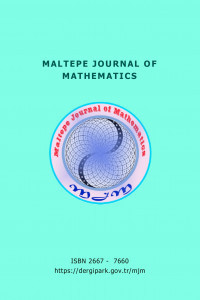Spectral Disjointness and Invariant Subspaces
Spectral Disjointness and Invariant Subspaces
spectral disjointness invariant subspaces,
___
- [1] S. V. Djordjevic, R. E. Harte and D. A. Larson, Partially hyperinvariant subspaces, Oper- ators Matrices, 6 (2012) 97-106.
- [2] R. E. Harte, Commutivity and separation of spectra II, Proc. Royal Irish Acad. 74A (1974) 239-244.
- [3] R. E. Harte, Cayley-Hamilton for eigenvalues, Irish Math. Soc. Bull. 22 (1989) 66-68.
- [4] R. E. Harte, Block diagonalization in Banach algebras, Proc. Amer. Math. Soc. 129 (2001) 181-190.
- [5] R. E. Harte, Spectral mapping theorems, a blu er's guide, Springer Briefs, (2014).
- [6] R. E. Harte, On non commutative Taylor invertibility,Operators Matrices, 10 (2016) 1117- 1131.
- [7] R. E. Harte and C. M. Stack, Invertibility of spectral triangles, Operators Matrices, 1 (2007) 445-453.
- [8] R. E. Harte and C. M. Stack, Separation of spectra for block triangles, Proc. Amer. Math. Soc. 136 (2008) 3159-3164.
- [9] J.J. Koliha, Block diagonalization,Math. Bohemica, 126 (2001) 237-246.
- [10] D. Rosenthal and P. Rosenthal, A readable introduction to real mathematics, Springer, (2014).
- [11] C. J. Read, All primes have closed range, Bull. London Math. Soc.33 (2001) 341-346.
- ISSN: 2667-7660
- Yayın Aralığı: Yılda 2 Sayı
- Başlangıç: 2019
- Yayıncı: Hüseyin ÇAKALLI
On $I-$Deferred Statistical Convergence in Topological Groups
PPF Dependent Fixed Points of Generalized Weakly Contraction Maps Via $c_g-$simulation Functions
G. V. R. BABU, Madugula VİNOD KUMAR
Triple Positive Solutions For A Nonlinear Fractional Boundary Value Problem
Djourdem HABİB, Slimane BENAİCHA
Spectral Disjointness and Invariant Subspaces
